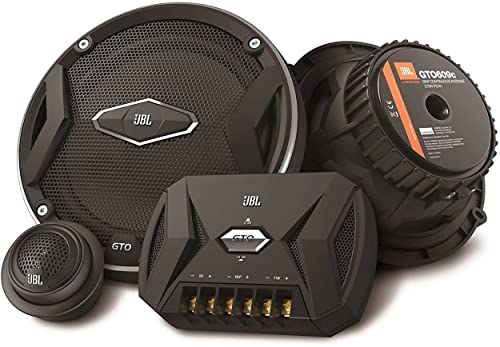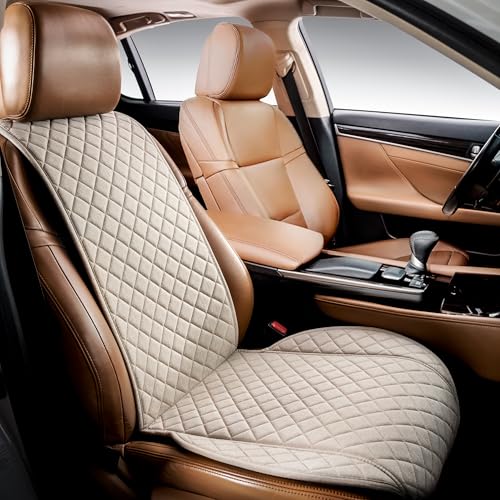What is the Meaning of Automotive Components: Essential Guide
Automotive components are the parts and systems that make up a vehicle, including castings, forgings, and assemblies. These components are essential for the functionality and performance of automobiles.
The automotive component industry is highly fragmented, manufacturing a wide range of parts for all types of vehicles. From the smallest fasteners to the largest body panels, automotive components encompass a diverse array of elements and systems. Additionally, automotive grade refers to components that meet vehicle grade requirements, with industry-recognized certification standards.
The chassis of an automobile incorporates major assemblies such as the engine, transmission components, control systems, and suspension system. The automotive components manufacturing industry plays a critical role in the construction of new automobiles and aftermarket accessories, contributing to the overall performance and safety of vehicles.
Introduction To Automotive Components
Automotive components refer to the essential parts and systems that make up a vehicle, including everything from the engine and transmission to smaller elements like fasteners and body panels. These components play a crucial role in the overall functionality and performance of an automobile.
The Role In Vehicle Functionality
Automotive components play a crucial role in ensuring the proper functionality of a vehicle. From the engine to the brakes, each component contributes to the overall performance and safety of the vehicle.
Without these components, a vehicle would not be able to operate efficiently or safely on the road. Each part has a specific function that is essential for the vehicle to function as intended.
Diversity Of Parts
The automotive industry encompasses a wide array of parts, each serving a unique purpose in the operation of a vehicle. These parts range from intricate electronic components to heavy-duty mechanical parts.
Each component is designed with precision to ensure optimal performance and longevity. The diversity of parts ensures that every aspect of a vehicle’s operation is carefully considered and accounted for.
Core Elements Of Vehicles
Understanding the core elements of vehicles is essential in comprehending how automobiles function. From the engine components to the transmission system basics, each part plays a crucial role in ensuring the vehicle operates efficiently.
Engine Components
The engine components are the heart of any vehicle, responsible for generating power to move the car forward. These include the cylinders, pistons, crankshaft, and camshaft, all working together in harmony to produce the necessary energy for propulsion.
Transmission System Basics
The transmission system basics encompass the mechanisms that transfer power from the engine to the wheels. This system includes the gearbox, clutch, propeller shaft, and axles, all instrumental in controlling the speed and direction of the vehicle.
Exterior Automotive Parts

When it comes to the exterior of a vehicle, various components play a crucial role in not only enhancing the aesthetic appeal but also ensuring functionality and safety. Let’s delve into the key categories of exterior automotive parts.
Body Panels And Structures
Body panels are integral to the external structure of a vehicle, encompassing elements such as doors, fenders, hoods, and trunks. These components not only contribute to the visual design but also provide protection and aerodynamic efficiency.
Aerodynamics And Design
Aerodynamics and design elements are pivotal in shaping the overall performance and appearance of a vehicle. From the curvature of the body to the positioning of spoilers and air dams, aerodynamics play a vital role in improving fuel efficiency and stability.
Interior Components
The interior components of an automotive play a crucial role in providing safety, comfort, and convenience to the passengers and driver. These components are designed to enhance the overall driving experience and ensure a pleasant journey.
Safety Features
Safety features in the interior of a car are designed to protect the occupants in the event of a collision or sudden braking. These features include airbags strategically placed in the front, sides, and even curtains, seat belts with pretensioners and force limiters, and impact-absorbing materials in the dashboard and door panels to minimize injuries.
Comfort And Convenience
Comfort and convenience are paramount in the design of interior components. This encompasses elements such as ergonomically designed seats that provide support and reduce fatigue during long drives, climate control systems for regulating temperature, infotainment systems with navigation and entertainment options, and ambient lighting for a pleasant atmosphere.
Electrical Systems In Modern Cars
When it comes to modern cars, the electrical systems play a crucial role in powering various components and ensuring a smooth driving experience. From the battery and charging system to infotainment and navigation, electrical systems are integral to the functionality of contemporary vehicles.
Battery And Charging
The battery and charging system in modern cars is responsible for providing the necessary power to start the engine and operate electrical components. It comprises the battery, alternator, and various electrical connections that ensure a continuous power supply throughout the vehicle.
Infotainment And Navigation
Infotainment and navigation systems are essential features in modern cars, offering entertainment, communication, and navigation capabilities. These systems rely on the electrical components to function, including the central control unit, touchscreen display, GPS module, and audio amplifiers.
The Suspension And Steering Systems
The Suspension and Steering Systems are crucial components of a vehicle that ensure a smooth and controlled driving experience. These systems work together to provide stability, control, and comfort while driving.
Shock Absorbers And Struts
Shock absorbers and struts are essential parts of the suspension system. They help in dampening the impact of road irregularities, providing a comfortable ride, and maintaining tire contact with the road surface.
Wheel Alignment And Control
Wheel alignment and control are vital for ensuring proper handling and stability. Proper alignment helps in maintaining even tire wear and optimal vehicle control, while control systems contribute to steering responsiveness and stability.
Automotive Grade And Standards
Understanding Certifications
Automotive grade refers to components meeting vehicle requirements. AEC-Q series sets industry standards for automotive parts.
Importance Of Quality Control
Quality control is crucial to ensure automotive components meet high standards and perform reliably in vehicles.
Evolution Of Automotive Parts Manufacturing
Automotive components refer to the various parts and systems that constitute a vehicle, ranging from small fasteners to major body panels and the engine. These components are crucial to the functioning of an automobile and are manufactured to meet specific automotive grade standards, ensuring safety and performance on the road.
Historical Perspective
Automotive parts manufacturing has a rich history dating back to the early days of automobile production. Initially, parts were crafted by hand, leading to limited production capabilities and higher costs.
Advancements In Technology
With the advent of modern technologies, such as computer-aided design (CAD) and advanced manufacturing processes like 3D printing, automotive parts manufacturing has undergone a significant transformation. These advancements have enabled more precise production, increased efficiency, and reduced lead times.
Aftermarket Vs Oem Components
When it comes to automotive components, there are two main categories: OEM and aftermarket parts. Let’s dive into the differences between the two and explore the pros and cons of each.
Defining Oem And Aftermarket Parts
OEM (Original Equipment Manufacturer) parts are components made by the same company that built the vehicle. These parts are designed to match the specifications of the original parts installed in the car.
Aftermarket parts, on the other hand, are manufactured by third-party companies. These parts may vary slightly from the original specifications and are often used as alternatives to OEM parts.
Pros And Cons Of Each
| OEM Parts | Aftermarket Parts | |
|---|---|---|
| Pros |
|
|
| Cons |
|
|
Choosing between OEM and aftermarket parts depends on factors like budget, desired quality, and the specific needs of your vehicle. Consider these pros and cons carefully before making a decision.
Future Trends In Automotive Components
Automotive components refer to the various parts and systems that make up a vehicle, ranging from small fasteners to large body panels. As the automotive industry continues to evolve, future trends in components may include increased use of lightweight materials, greater automation and electrification, and advanced safety features.
Innovation in Materials
Innovation in materials is a critical factor in the future of automotive components. Engineers are continuously exploring new materials, as the demand for lightweight and durable parts increases. The use of innovative materials like carbon fiber, nanomaterials, and composites is becoming more common in the automotive industry. These materials offer improved strength, durability, and resistance to corrosion.
Impact of Electric Vehicles
With the rise of electric vehicles, the automotive industry is experiencing a significant shift. This shift is causing a significant impact on the manufacturing of automotive components. The traditional internal combustion engine is being replaced by electric motors, and this change is driving the need for different parts and components. The focus is shifting towards the design and manufacture of new components such as batteries, electric motors, and power electronics, which require different materials and production processes.
In addition to the changes in the manufacturing process, the shift towards electric vehicles is also driving changes in the supply chain. The demand for new components is creating new opportunities for suppliers, and we are seeing the emergence of new players in the automotive industry.
Ensuring Sustainable Manufacturing
As sustainability becomes a more significant concern, the automotive industry is looking for ways to reduce the environmental impact of manufacturing processes. This focus on sustainability is driving the development of new manufacturing processes that use renewable energy sources, reduce waste and emissions, and promote circular economies.
In conclusion, the future of automotive components is driven by innovation, sustainability, and the shift towards electric vehicles. The development of new materials and manufacturing processes will continue to shape the industry, and suppliers and manufacturers must adapt to these changes to remain competitive.

Frequently Asked Questions
What Are Automotive Components?
Automotive components are parts and systems that make up a vehicle, from fasteners to body panels and engines.
What Is The Meaning Of Automotive Parts?
Automotive parts are components and systems that make up a car, ranging from small fasteners to large body panels.
What Is The Meaning Of Automotive Grade?
Automotive grade refers to components meeting vehicle grade standards, such as AEC-Q series certification for automotive use.
What Are The Components And Functions Of An Automobile?
Automobile components include the engine, transmission, brakes, steering, suspension, and electrical system. They enable propulsion, control, and safety.
Conclusion
To sum up, automotive components are the various parts and systems that make up a car, including castings, forgings, finished and semi-finished components, assemblies, and subassemblies. These components can range from the smallest fasteners to the largest body panels, and they play a vital role in the performance and safety of a vehicle.
With the automotive industry constantly evolving, the demand for high-quality and reliable components continues to rise. As such, the automotive component manufacturing industry remains a critical part of the overall automotive sector, ensuring that vehicles are built to the highest standards of quality and safety.







